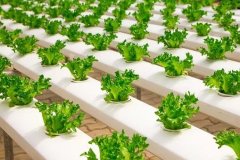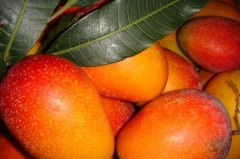Key points of organic cultivation of green manure ryegrass

Ryegrass (Italian ryegrass) is a perennial herbage with a general growth period of 1 to 2 years. The fibrous root is well developed, the base is tufted, and the plant height is 90 to 130 cm. The leaves are long and wide, dark green and glossy, curved and drooping. Ryegrass likes warm and humid climate, fertile soil, but also suitable for clayey soil and red soil, the most suitable PH value for soil is 6 to 7.
Ryegrass is of good quality and palatability, not only cattle, sheep, pigs, rabbits, geese, chickens and other livestock and poultry like to eat, but also a good feed for grass carp. Ryegrass has great potential to increase production. Under the condition of better water and fertilizer conditions and early sowing, the yield of fresh grass per mu can reach about 10,000 kg. At the general level of fertilization management, the yield per mu is also about 5000 kg.
Ryegrass can be sown in spring and autumn during sowing time. Autumn sowing has more harvesting times and higher total yield, while spring sowing can prolong the harvest utilization period, and the grass is fresh and tender, but the total yield is lower. The sowing time of autumn sowing is from early September to mid-late November, and spring sowing is in early February.
Sowing operation apply pig pen fertilizer 1000 to 1500 kg per mu before sowing. If there is no pig pen fertilizer and other organic fertilizer, 25 to 30 kilograms of calcium magnesium phosphate fertilizer can be applied per mu as base fertilizer. After fertilizing, plough and prepare the land to make beds. Ryegrass seeds are small, requiring the border surface to be flat without large soil clods. The way of sowing is either strip sowing or spreading, but for the convenience of management, strip sowing is better. The amount of seed used per mu is about 1.5 kg. If there is less rain or the soil is dry during the sowing period, the seeds can be soaked in clean water for 2 to 4 hours to facilitate seedling emergence and improve the seedling rate.
The management of ryegrass seedling stage should be timely ploughing and weeding. After the peak tillering period, the line has been closed for shade, but no more weeding. After each harvest, a small amount of nitrogen fertilizer should be applied to accelerate regeneration and increase yield. Attention should be paid to the harm of tigers and mole crickets at seedling stage, and "poison silk" pesticides should be used for prevention and control if found.
The height of the grass layer for harvesting ryegrass is about 30 cm. The harvest sooner or later, times and yield are not only related to fertilizer and water management conditions, but also affected by sowing date. If sown in early autumn, it can be cut once or twice this year, and about 4 times from the Beginning of Spring to Lesser Fullness of Grain the following year. Those sown in October, if well managed, will be cut once in the year and 2 to 3 times after the year. Spring sowing can be cut three times by the beginning of June. Farmers may arrange the sowing time reasonably according to the situation of livestock and poultry breeding.
- Prev

The new EU regulations on organic product certification reject "hydroponics" and "elimination"
On June 14, 2018, the European Commission issued (EU) 2018 No 848, a new organic product and organic product labelling regulation, which will be implemented on January 1, 2021, when (European Commission) 834max 2007 will be repealed. On June 14, 2018, the European Commission issued (EU) 2018 Universe 848, new
- Next

Which kind of mango is the best, the sweetest, the sweetest, the mango, Tainong, the mango star
Aiwen, a beautiful name, belongs to a kind of mango in Taiwan. It is oval, its top is pointed, and its skin color is pleasing apple red. Bright color, thin skin and thin meat, almost no fiber, fragrant, juicy, sweet and sour delicious people use various words to describe love.
Related
- Fuxing push coffee new agricultural production and marketing class: lack of small-scale processing plants
- Jujube rice field leisure farm deep ploughing Yilan for five years to create a space for organic food and play
- Nongyu Farm-A trial of organic papaya for brave women with advanced technology
- Four points for attention in the prevention and control of diseases and insect pests of edible fungi
- How to add nutrient solution to Edible Fungi
- Is there any good way to control edible fungus mites?
- Open Inoculation Technology of Edible Fungi
- Is there any clever way to use fertilizer for edible fungus in winter?
- What agents are used to kill the pathogens of edible fungi in the mushroom shed?
- Rapid drying of Edible Fungi

